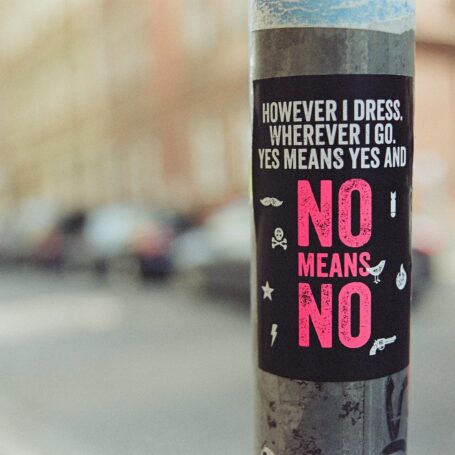Three Movies and a Play Explore U.S. Racial Politics

James Baldwin, the subject of he new documentary I Am Not Your Negro.
While the political circus surrounding our new chief executive continues unabated, I wanted to use this month’s column to talk about how our culture still provides us with important insights into our past and current conundrums, none more important than race relations.
Three remarkable documentaries and a new play focus on race in America and the political responses to it. Ezra Erdman’s Academy Award winning O.J.: Made in America; Ava Duvernay’s 13TH; and Rauol Peck’s I Am Not Your Negro deserve wide viewership and continued admiration. In addition to these, the past year’s cinema also gave us Moonlight, Loving, and Hidden Figures, which also examined race in America in a non-documentary fashion. Finally, Robert Schenkkan’s sequel to his play All the Way, called The Great Society, continues the story of Lyndon Johnson’s presidency, this time examining the years 1965 to 1969.
O.J.: Made in America
Erdman, who dedicated his award to Nicole Brown and Ron Goldman, is interested in why a man who consistently denied his race became the vehicle for black protest against the criminal justice system. He examines O.J. Simpson in the context of race relations from the 1960s to the 1990s. As a kid growing up in San Francisco’s poorest neighborhood, Simpson gets into plenty of mischief, but like many before and after him uses his athletic talents to escape and reinvent himself. Recruited to the University of Southern California (USC) he becomes one of the greatest football players of all time. USC, a private university, was a bastion of white privilege abutting many of Los Angeles’ poor neighborhoods, including Watts. The glamor of its football program during Simpson’s time there also attracted celebrities associated with Hollywood. It allowed, Erdman shows, Simpson to get a leg up on a post-football acting career.
Unfortunately for O.J., the NFL draft system sent him to play his pro ball in Buffalo. Despite setting many records and becoming a five time all pro, Simpson could not wait to get back to California. In 1978 he got his wish and returned to his hometown to play two more seasons with the San Francisco 49ers. He then embarked on his Hollywood career, most famously as a commercial spokesperson for Hertz.
During all this, Erdman indicates that Simpson pretty much ignored the civil rights agitation then occurring. Erdman shows him responding to questions by saying: “I’m not black, I’m O.J.” His world revolved around white Hollywood, according to the film, and aside from his old football buddies, Erdman notes that most of the people who hung out at his Brentwood estate were white, including his second wife, Nicole Brown.
As with any story about Simpson, Erdman spends a lot of time on the murder and subsequent trial, getting interviews with most of the surviving players. While it appears the Erdman is convinced that O.J. was guilty, the filmmaker shows us the depth of the racial divide over the verdict. Many of the civil rights activists who criticized Simpson earlier in the film are now seen defending the jury’s decision, which was made in the context of the acquittal of the white policemen who assaulted Rodney King only two years before.
Erdman also takes us through O.J.’s post-trial life including his escape to Florida to avoid paying the judgment in the civil trial brought by the Brown and Goldman families and to exult in his golf game and lavish lifestyle.
The film begins and ends with Simpson in a Nevada prison serving time for a clownish, thuggish scheme to recover his sports memorabilia. An item in last week’s news indicated that O.J. may soon receive parole and become a free man again after serving eight years.
13TH
Duvernay, the director of Selma, is interested in why the United States has 25 percent of the world’s prison population and how our criminal justice system provided the means to achieve this dubious record. She starts with the wording of the 13th Amendment to the Constitution, which we all learned in school abolished slavery after the Civil War. However, most of us forgot the clause that indicates that slavery is OK “as a punishment for crime whereof the party shall have been duly convicted.”
She shows us that even before the Supreme Court’s 1896 Plessy v Ferguson decision sanctioned the development of Jim Crow laws in the South, law enforcement would arrest former slaves and make them slaves again as prison labor. She takes us through the twentieth century’s evil record of white on black crime through glorifying the Ku Klux Klan in D.W. Griffith’s Birth of a Nation and ignoring it when it came to lynching, murdering civil rights leaders like Medgar Evers, and children like Emmitt Till.
However, DuVernay is most interested in what Michelle Alexander called “The New Jim Crow”: the disproportionate growth of the black prison population since the declaration of the war on drugs by President Richard Nixon and the further campaign by President Ronald Reagan’s administration. She also chastises President Bill Clinton for the 1994 Omnibus Crime Control Act, which federalized California’s now discredited experiment with “three strikes and you’re out,” mandatory minimum sentencing, and sentencing disparities between crack and powder cocaine. Aside from Alexander, who is a prominent interviewee, DuVernay gives time to Angela Davis, Henry Louis Gates, Senator Cory Booker, former Representative Charles Rangel (whom Grover Norquist blames for the whole problem), and criminologists John Hagan and Marie Gottschalk. Even former House Speaker Newt Gingrich shows up to tell us that Blacks have not received a fair break in American history.
Another aspect Duvernay examines is the privatization of the American correctional system. There has been a growing recognition by states and both sides of the political spectrum that this mass incarceration must end (from the states’ point of view for cost reasons). Yet, DuVernay is not optimistic that with the new administration, whose rhetoric emphasizes punishment of criminals, bipartisan criminal justice reform, which seemed possible at the end of the Obama’s tenure, can happen.
I Am Not Your Negro
In his documentary, Haitian director Raoul Peck reintroduces us to James Baldwin, one of the most influential black writers of the 20th century. Author of numerous novels, plays, and essays, Baldwin had planned to write a book about Mississippi NAACP Chairman Medgar Evers, Malcolm X, and Dr. Martin Luther King, Jr. all of whom died violently and became martyrs of the civil rights movement. Baldwin only wrote 32 pages, but these words become the jumping off point of the movie. One fascinating scene shows us King and Malcolm interviewed by psychologist Kenneth Clark in 1963 in which they clearly disagree about “turning the other cheek.”
Peck explores the history of race relations in the late 20th century seen through Baldwin’s eyes. Living in exile in France since 1948, Baldwin comes back to the U.S. in 1957, saying he could “no longer sit around Paris discussing the Algerian problem and the black American problem. Everybody else was paying their dues, and it was time I went home and paid mine.” We see him becomes deeply involved in the movement, often as an observer of the activities in the South. He also attends, as a “cultural celebrity,” with Marlon Brando, Charlton Heston, and others, but is not allowed to speak, at the 1963 March on Washington.
Baldwin also discusses the famous meeting he arranged with then Attorney General Robert Kennedy in the midst of the crisis in Birmingham in 1963. Present, in addition to Baldwin, were Clark, Harry Belafonte, Lena Horne, and Lorraine Hansberry. Kennedy was unresponsive to Hansberry’s plea that his brother, the president, accompany a black girl into a Southern school. Although those present felt the meeting was a disaster, some have credited it with planting the seed that helped RFK’s transformation on race, which later manifested itself in his 1968 presidential campaign.
Baldwin is fascinated by American popular culture and the filmmaker shows him at a debate with William F. Buckley Jr. at Cambridge University in 1965, where the author notes: “It comes as a great shock… to discover that Gary Cooper killing off the Indians when you were rooting for Gary Cooper, that the Indians were you.” He also comments on The Defiant Ones, which he claims “it is impossible to accept the premise of the story,” In the Heat of the Night and Guess Who’s Coming to Dinner. Also at the Cambridge debate, Baldwin dismisses Robert Kennedy’s statement that “there is no reason that in the near and foreseeable future that a Negro could not also be president of the United States.” Of course, we then see Barack Obama on the screen.
By 1968, Baldwin has become a semi-regular on the Dick Cavett television show and he continues to confront the racism prevalent in American society chastising Yale philosophy professor Paul Weiss for his rather naïve views on the subject. He died in 1987.
What these three extraordinary documentaries demonstrate is what Baldwin summed up: “The story of the Negro in America is the story of America. It is not a pretty story.” He also suggested in 1963 that he was an optimist, but noted “the future of the Negro in this country is precisely as bright or as dark as the future of the country. It is entirely up to the American people and our representatives…whether or not they are going to face and deal with and embrace this stranger who they have maligned so long.”
The Great Society
Lyndon Johnson’s vision of a great society was to use the power of the federal government to enact programs that would help end poverty, promote racial justice, and improve the lives of all Americans. Like All the Way, which centered on the enactment of the 1964 Civil Rights Act, Schenkkan’s sequel examines the pressures to pass a Voting Rights Act of 1965 and again dramatizes the confrontational relationship between LBJ and Martin Luther King. In both plays the creeping escalation of the U.S. involvement in Vietnam hovers over all the action, but especially as it overtakes the building of the Great Society at the focus of the administration.
LBJ’s legislative achievements of 1965-66 are enormous and transformed American life and politics. Aside from the Voting Rights Act, a partial list includes Medicare, Medicaid, the War on Poverty, the Elementary and Secondary Education Act, the Higher Education Act, Head Start, Public Broadcasting, and the National Endowment for the Arts and Humanities. Of course, many of these are under attack in 2017 by the new administration and the Republicans in Congress.
Yet by 1966, the backlash had begun and the Democrats lost 46 House seats in the congressional elections. By then, riots had occurred in Harlem and Watts with more to come in Detroit and Newark as the rising expectations brought by the legislative action did not immediately translate into significant changes in people’s lives. Schenkkan also focuses on King’s disastrous turn North and his failures in Chicago to move Mayor Richard Daley toward desegregating his city.
Vietnam would continue to escalate in 1967 and LBJ’s bitter rivalry with Robert Kennedy is also depicted as well as Johnson’s turn against King for his audacity to publicly oppose the war. We see Robert McNamara, previously a cheerleader for escalation change his mind and escape to the World Bank presidency. In addition, House Ways and Means Chairman Wilbur Mills and Senate Minority Leader Everett Dirksen depicted earlier as victims of the LBJ Treatment on the Medicare bill exact their revenge by forcing LBJ into cutting domestic programs. Funding “Guns and Butter” would not work anymore.
By 1968, the country had turned against LBJ and in his famous March 31st speech he declares that he will not run for another term. Then five days later King is assassinated, more riots occur and that year’s “law and order candidate,” Richard Nixon, is on his way to a narrow victory over Hubert Humphrey.
Schenkkan has a scene almost at the end of the play where Johnson and Nixon meet. Johnson tells Nixon that he should thank Humphrey for not raising the issue of the Nixon campaign’s secret meetings with the government of South Vietnam to encourage them to delay attending the Paris Peace talks, thus undercutting LBJ’s peace initiative. Nixon smiles and says that Humphrey never used the information because it was obtained by an illegal wiretap. Sound familiar! Schenkann also has Nixon declare that he is “going to make America great again,” which got a huge laugh from the audience at the theater in Sarasota, Florida.
Go see these movies and look for a production of the play. They are a much better use of your time than watching the current news!





























































































Something i think some of these commenters should hear:
“If you stick a knife into my back nine inches pull it out six inches, there’s no progress. You pull it all the way out- that’s not progress. Progress is healing the wound that the blow made. And they haven’t even begun to pull the knife out, much less try and heal the wound. They won’t even admit the knife is there.” Malcolm X.